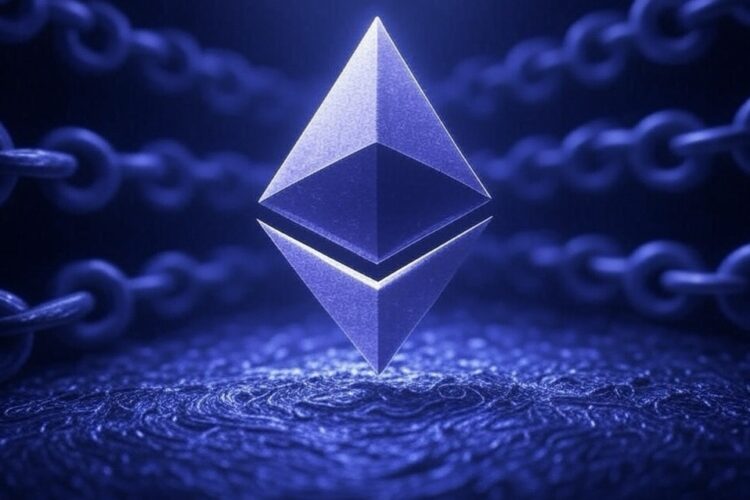Ethereum, a leading blockchain platform, powers decentralized apps (DApps), smart contracts, and DeFi with its native cryptocurrency, Ether (ETH). Launched in 2015, it uses the Ethereum Virtual Machine (EVM) to execute code across a global node network. The 2022 Merge shifted Ethereum to Proof of Stake, cutting energy use and enabling staking. ETH pays for transactions and gas fees, with EIP-1559 improving fee predictability. Standards like ERC-20 and ERC-721 drive tokens and NFTs. Scalability solutions, including Layer 2 rollups and sharding, tackle high fees and congestion. Despite challenges like security risks and regulatory scrutiny, Ethereum’s ecosystem, from Uniswap to DAOs, fuels Web3 innovation. Future upgrades like account abstraction and zero-knowledge proofs promise enhanced privacy and usability, solidifying Ethereum’s role in decentralized finance, NFTs, and beyond.
Long Version
Ethereum, a pioneering blockchain platform, has redefined the landscape of decentralized technologies since its inception in 2015 by Vitalik Buterin and co-founders. As the second-largest cryptocurrency by market capitalization, Ethereum’s native currency, Ether (ETH), powers a vast ecosystem of smart contracts, decentralized applications (DApps), and decentralized finance (DeFi) protocols. This article provides a comprehensive exploration of Ethereum, delving into its technical architecture, economic model, scalability solutions, and transformative applications, seamlessly weaving together broad and niche concepts to offer an authoritative resource on this groundbreaking technology.
The Foundation: What is Ethereum?
At its core, Ethereum is a distributed ledger technology that operates as an open-source, decentralized blockchain. Unlike Bitcoin, which primarily serves as a digital currency, Ethereum is a programmable platform enabling developers to build and deploy smart contracts—self-executing agreements with predefined rules encoded on the blockchain. These contracts run on the Ethereum Virtual Machine (EVM), a Turing-complete environment that processes transactions and executes code across a global network of nodes.
Ethereum’s consensus mechanism ensures the integrity of its ledger. Initially relying on Proof of Work (PoW), where miners solved computational puzzles to validate transactions, Ethereum transitioned to Proof of Stake (PoS) during The Merge in September 2022. This shift, facilitated by the Beacon Chain, reduced energy consumption by over 99% and introduced staking, where validators lock up ETH to secure the network and earn rewards.
Ether and Gas: The Economic Engine
Ether (ETH) is Ethereum’s native cryptocurrency, used to pay for transactions and computational services. Every operation on Ethereum, from transferring ETH to executing a smart contract, incurs gas fees, measured in Gwei (a fraction of ETH). Gas fees compensate validators for processing transactions and maintaining network security. The gas limit determines the maximum computational effort a transaction can require, ensuring the network remains efficient.
The EIP-1559 upgrade in 2021 revolutionized Ethereum’s fee market by introducing a base fee, which is burned (removed from circulation), and an optional tip for validators. This mechanism enhances fee predictability and introduces deflationary pressure on ETH’s supply, potentially increasing its value over time. However, high gas fees during network congestion have driven demand for scalability solutions, which we’ll explore later.
Smart Contracts and Standards: The Building Blocks
Smart contracts are Ethereum’s hallmark, enabling trustless automation across industries. Written in languages like Solidity, these contracts execute automatically when conditions are met, eliminating intermediaries. For example, a smart contract could release funds to a freelancer only after a task is verified, streamlining processes with transparency.
Ethereum’s token standards, such as ERC-20, ERC-721, and ERC-1155, define how tokens operate on the network. ERC-20 tokens, like stablecoins (e.g., USDC, USDT), power DeFi protocols and enable fungible assets. ERC-721 underpins non-fungible tokens (NFTs), unique digital assets driving innovation in art, gaming, and collectibles. ERC-1155 supports both fungible and non-fungible tokens, offering flexibility for complex applications.
The Ethereum Ecosystem: DApps, DeFi, and Beyond
Ethereum’s versatility has spawned a vibrant ecosystem of DApps, ranging from financial tools to decentralized social platforms. Key sectors include:
Decentralized Finance (DeFi)
DeFi leverages Ethereum’s smart contracts to recreate traditional financial systems without intermediaries. Protocols like Uniswap, an Automated Market Maker (AMM), facilitate token swaps through liquidity pools, where users provide assets to earn fees. Yield farming allows users to stake tokens in DeFi protocols to maximize returns, while flash loans enable uncollateralized borrowing within a single transaction.
DeFi’s growth has been fueled by stablecoins, which maintain pegs to fiat currencies, and oracles like Chainlink, which feed real-world data (e.g., price feeds) to smart contracts. However, risks like smart contract vulnerabilities and MEV (Maximal Extractable Value)—where validators manipulate transaction ordering for profit—require ongoing vigilance.
Non-Fungible Tokens (NFTs)
NFTs, built on ERC-721 and ERC-1155 standards, have transformed digital ownership. From digital art marketplaces to virtual real estate in metaverses, NFTs enable verifiable scarcity on the blockchain. The Ethereum Name Service (ENS), which assigns human-readable names (e.g., “vitalik.eth”) to Ethereum addresses, exemplifies NFT utility beyond collectibles.
Decentralized Autonomous Organizations (DAOs)
DAOs are community-governed entities operating via smart contracts. Token holders vote on proposals, from protocol upgrades to treasury management, embodying Ethereum’s ethos of decentralization. DAOs face challenges like Sybil resistance, ensuring no single entity controls multiple voting identities, but remain a cornerstone of Web3 governance.
Scalability: Addressing Ethereum’s Bottleneck
Ethereum’s popularity has strained its capacity, leading to high gas fees and slower transaction times during peak usage. To address this, Ethereum is pursuing a multi-faceted scalability roadmap:
The Merge and Proof of Stake
The Merge marked Ethereum’s shift to PoS, reducing energy use and laying the groundwork for future upgrades. Validators now stake ETH to secure the network, facing slashing penalties for misbehavior. This transition improved efficiency but didn’t directly address transaction throughput.
Sharding
Sharding, a future upgrade, will split Ethereum’s blockchain into smaller chains (shards), each processing transactions in parallel. This promises to increase throughput significantly, making Ethereum more accessible for global adoption.
Layer 2 Solutions
Layer 2 (L2) solutions operate atop Ethereum’s main chain (Layer 1) to enhance scalability while inheriting its security. Rollups, including Optimistic Rollups (e.g., Arbitrum, Optimism) and ZK-Rollups (e.g., zkSync, StarkNet), batch transactions off-chain and submit compressed data to Layer 1, reducing costs and latency. Sidechains, like Polygon, offer alternative scaling but with trade-offs in decentralization.
Recent Upgrades
The Cancun-Deneb upgrade (2024) introduced blob transactions, optimizing data storage for rollups and further reducing L2 costs. These advancements signal Ethereum’s commitment to scalability without compromising its security or decentralization.
Technical Deep Dive: Ethereum’s Architecture
Ethereum’s architecture is a marvel of distributed systems engineering. The EVM executes smart contracts with precision, while the blockchain’s state—tracking balances, contract data, and transaction history—is maintained across thousands of nodes. Zero-Knowledge Proofs (ZKPs), increasingly integrated into rollups, enable private and efficient transaction verification.
Account abstraction, explored through proposals like EIP-4337, aims to simplify user interactions by allowing customizable transaction logic, potentially replacing external wallets like Metamask. Meanwhile, cross-chain bridges connect Ethereum to other blockchains, facilitating interoperability but introducing security risks.
Ethereum Improvement Proposals (EIPs) drive protocol evolution. Beyond EIP-1559, upgrades like Byzantium and London have refined Ethereum’s performance. Hard forks implement major changes, while soft forks maintain backward compatibility, ensuring the network adapts to emerging needs.
Challenges and Criticisms
Despite its dominance, Ethereum faces challenges:
- High Gas Fees: While L2 solutions mitigate costs, Layer 1 fees remain prohibitive for small transactions.
- Scalability Trade-offs: L2 adoption fragments liquidity, and sidechains may sacrifice decentralization.
- Security Risks: Smart contract bugs and bridge exploits have led to significant losses.
- MEV: Validators’ ability to reorder transactions raises fairness concerns.
- Regulatory Uncertainty: DeFi and NFTs face scrutiny from global regulators, impacting adoption.
Ethereum’s community addresses these through rigorous audits, governance via DAOs, and ongoing research into ZKPs and Sybil resistance.
The Future: Ethereum in Web3 and Beyond
Ethereum’s vision extends beyond finance and collectibles. As the backbone of Web3, it envisions a decentralized internet where users control their data and interactions. Applications like decentralized social networks, gaming ecosystems, and supply chain tracking showcase Ethereum’s versatility.
Emerging trends include:
- Account Abstraction: Simplifying user experiences for mainstream adoption.
- Zero-Knowledge Proofs: Enhancing privacy and scalability.
- Cross-Chain Interoperability: Strengthening Ethereum’s role in a multi-chain world.
- Sustainability: PoS and energy-efficient upgrades align with global ESG goals.
Conclusion
Ethereum stands as a cornerstone of blockchain innovation, blending technical sophistication with real-world impact. From smart contracts and DeFi to NFTs and DAOs, its ecosystem redefines trust, ownership, and collaboration. While challenges like gas fees and scalability persist, solutions like sharding, rollups, and EIP-1559 demonstrate Ethereum’s adaptability. As it evolves, Ethereum remains a beacon of decentralization, driving the Web3 revolution and reshaping industries worldwide.
For developers, investors, or enthusiasts, Ethereum offers endless opportunities to explore, build, and innovate. Whether you’re deploying a DApp, staking ETH, or trading NFTs, Ethereum’s robust infrastructure and vibrant community ensure it will continue to lead the charge toward a decentralized future.
Hashtags For Social Media
#ethereum #eth #blockchain #cryptocurrency #smartcontracts #defi #decentralizedfinance #nfts #nonfungibletokens #web3 #dapps #proofofstake #themerge #gasfees #eip1559 #erc20 #erc721 #layer2 #rollups #sharding #staking #uniswap #metamask #daos #solidity #oracles #yieldfarming #liquiditypools #cryptotrading #blockchaintechnology
Related Questions, Words, Phrases
what is ethereum | how does ethereum work | what are smart contracts on ethereum | how to buy ether (eth) | what is the ethereum virtual machine | why did ethereum switch to proof of stake | what is the merge in ethereum | how do gas fees work on ethereum | what is eip-1559 and its impact on ethereum | what are erc-20 tokens | how are nfts created on ethereum | what is decentralized finance on ethereum | how does uniswap work on ethereum | what are layer 2 solutions for ethereum | what is sharding in ethereum | how does staking work on ethereum | what are the benefits of proof of stake in ethereum | how to build a dapp on ethereum | what is the role of oracles in ethereum | what are the risks of defi on ethereum | how does ethereum support web3 | what is the ethereum name service | how to reduce gas fees on ethereum | what are optimistic rollups on ethereum | what are zk-rollups and their role in ethereum | how does account abstraction work on ethereum | what is mev in ethereum | what are the challenges of ethereum scalability | how does the beacon chain function in ethereum | what are blob transactions in ethereum | how to use metamask with ethereum | what are daos on ethereum | how does solidity programming work on ethereum | what is the future of ethereum in blockchain | how does cross-chain bridging work with ethereum






